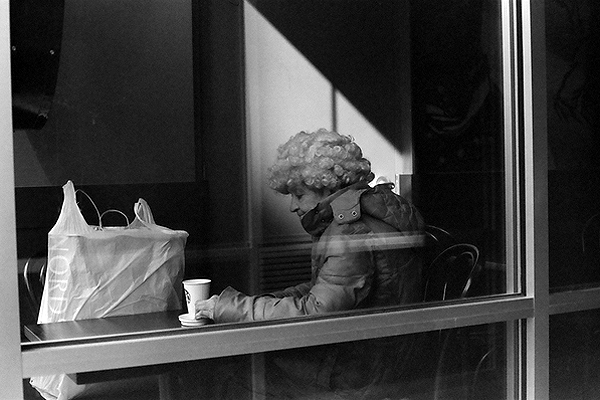
Bold. Daring. Boundless. Experimental.
The Watermill Center never plays it safe, and the fresh batch of artists for this year’s Residency Program at the laboratory is no exception.
“We’re looking for artists who are pushing the boundaries of their art form,” Residency Manager Lorien Reese said during a telephone interview last month. “And, in the words of our founder, Robert Wilson, ‘To do what no one else is doing.’ So that is our aim: to do what no one else is doing.”
The participants range from photographers and dancers to visual and performance artists. Spread out from October 10 to mid-June, the dozen residencies will flood the center on Water Mill Towd Road—its studios, housing, kitchen and even the woods, Ms. Reese explained.
Visual collagist and videographer Rachel Libeskind will be taking to nature when she arrives on the East End from Manhattan with Boston-based theater company Street Corner Society. Fittingly, her residency begins just before Halloween.
“We’ll be working on an environmental theater experience inspired by Elie Wiesel’s holocaust memoir, ‘Night,’ which will be drawing upon the rural theatrical tradition of a haunted hayride,” Ms. Libeskind wrote in an email last month. “As such, you can expect from us a league of wandering ghosts, deep primordial darkness and the promise of a roaring fire.”
Building a bridge between performance and visual art is Dead Puppet, a nearly 10-year-old, Manhattan-based company headed by Roman Paska. To him, puppet theater is radical. While he uses the traditional vocabulary of puppetry during his performances, he isn’t afraid to experiment, he explained in an email last month.
“It became our manifesto for a way of doing theater that asks the performer to work outside himself, transferring energy, character value to various other types of objects, especially puppets,” he said. “And the name ‘Dead Puppet’ is meant to be both paradoxical and ironic.”
During the company’s stay from January 16 to February 7, they will work on a performance poem, “Echo in Camera,” described as a mental drama that recasts the Orpheus legend as a play within a play, tracing the descent of a divided puppet protagonist through a “netherworld of his own imagination,” Mr. Paska said.
And it’s by no coincidence that Mr. Paska chose to push his creative limits at the Watermill Center, he added. Its reputation precedes itself.
“It’s Robert Wilson’s Watermill Center, whose work is so iconic and paradigmatic for anyone else creating theater as visual poetry,” he said. “Which is how I often like to describe what we do.”
When photographer John Atwood arrives at the laboratory at the end of May, he already has an idea of what’s to come. He first discovered the program last year when he participated in a joint residency with composer Daniel Knox. They developed an ongoing project, “Black & White,” based on mutual impressions of their shared hometown—Springfield, Illinois—where Mr. Atwood currently lives.
“I think our time there was a revelation to both of us,” Mr. Atwood said of last year’s residency in an email last month. “Creatively, I can’t think of a greater experience in my life.”
This year, Mr. Atwood will focus on laying still, street photography images over video works shot from the same time period to build an environment and, hopefully, reveal the chaos beneath, he said.
“I’ll be creating a video presentation that combines drawing, text and photography to explore the role of memory in my work as a photographer by expanding the space between a photograph and the moment it is revealed to me upon development,” he said. “I first discovered photography through the eyes of my father. He served in Saigon during the conflict in Vietnam and shot street-style photographs while he was stationed there. I remember seeing them as a child and being mesmerized by the stark nature of the images. I knew at a very young age that I wanted to create in that way.”
New Zealand artist Nova Jiang’s inspiration also stems from a childhood passion: comic books. And what she’s created, the “Ideogenetic Machine,” transforms her participants into the characters inside one—although it’s algorithmically generated.
The comic is created live using custom software, combining portraits of people captured with a camera and a database of drawings Ms. Jiang created, she explained in an email last month. At the end of each episode, the participants can email their comic books to themselves. She will be in residence in December.
“I’ve always been interested in comic books, especially independent comic books as an art form,” she said. “I’m also interested in questioning the hierarchies in our culture. I’ve wondered why something so accessible to so many more people is valued less in our culture. Some of my most profound artistic and literary experiences come from comic books. Giving people copies of the work for free is also another way of disrupting the hierarchy.”
For more information on upcoming programs, visit watermillcenter.org.